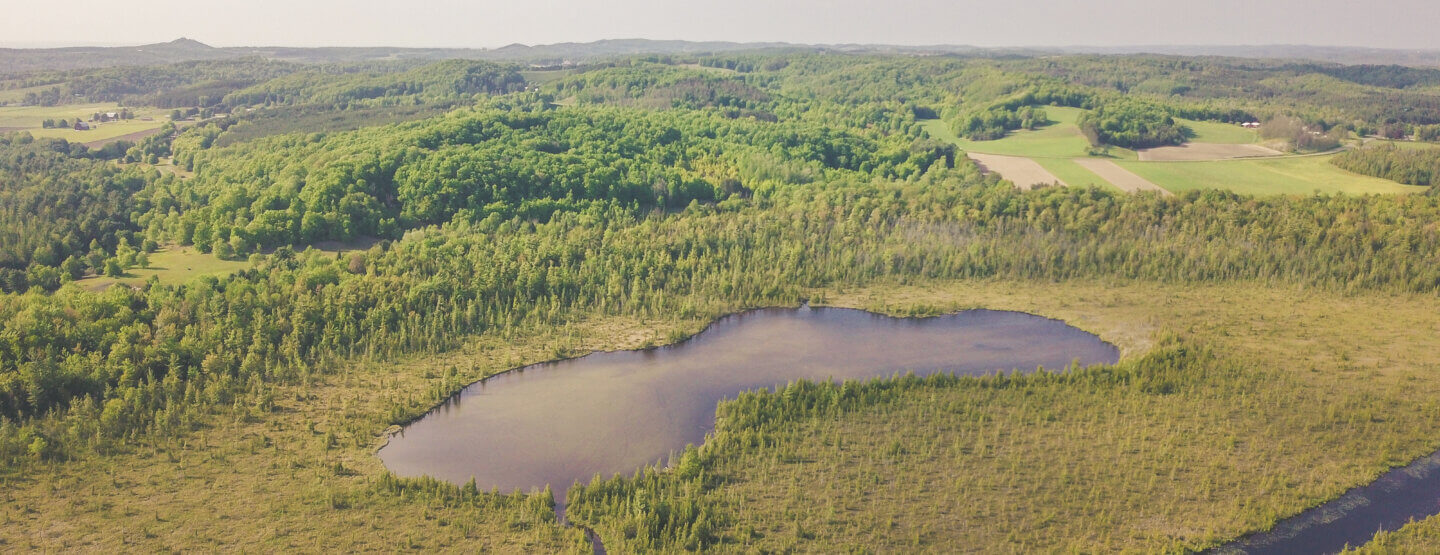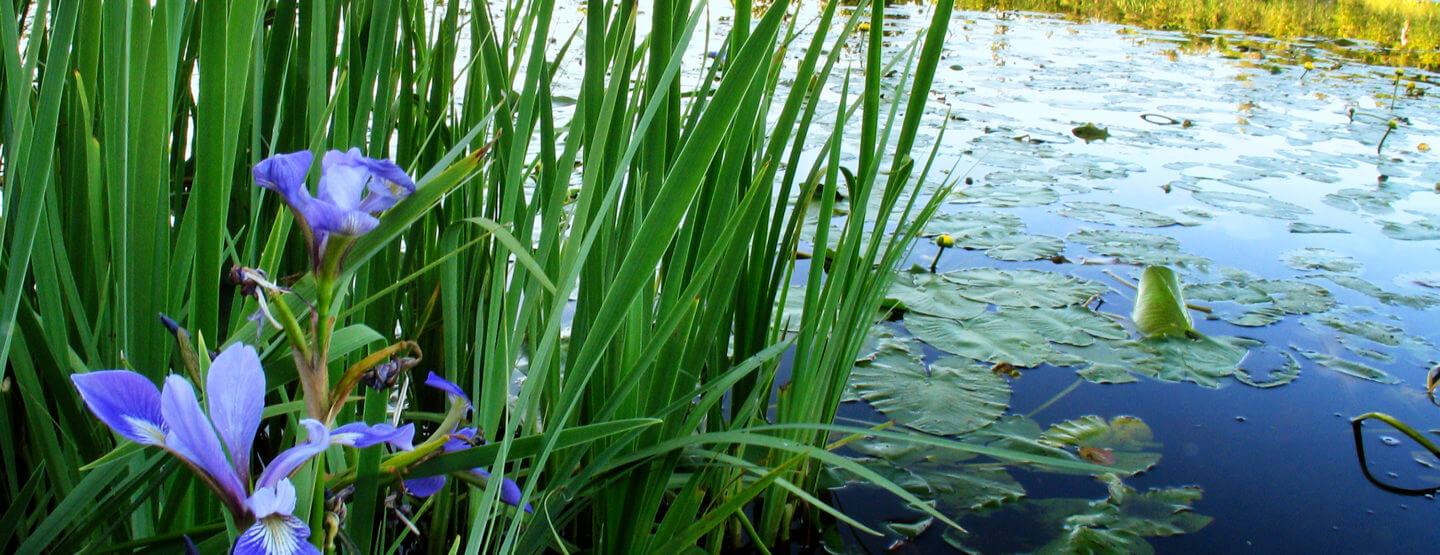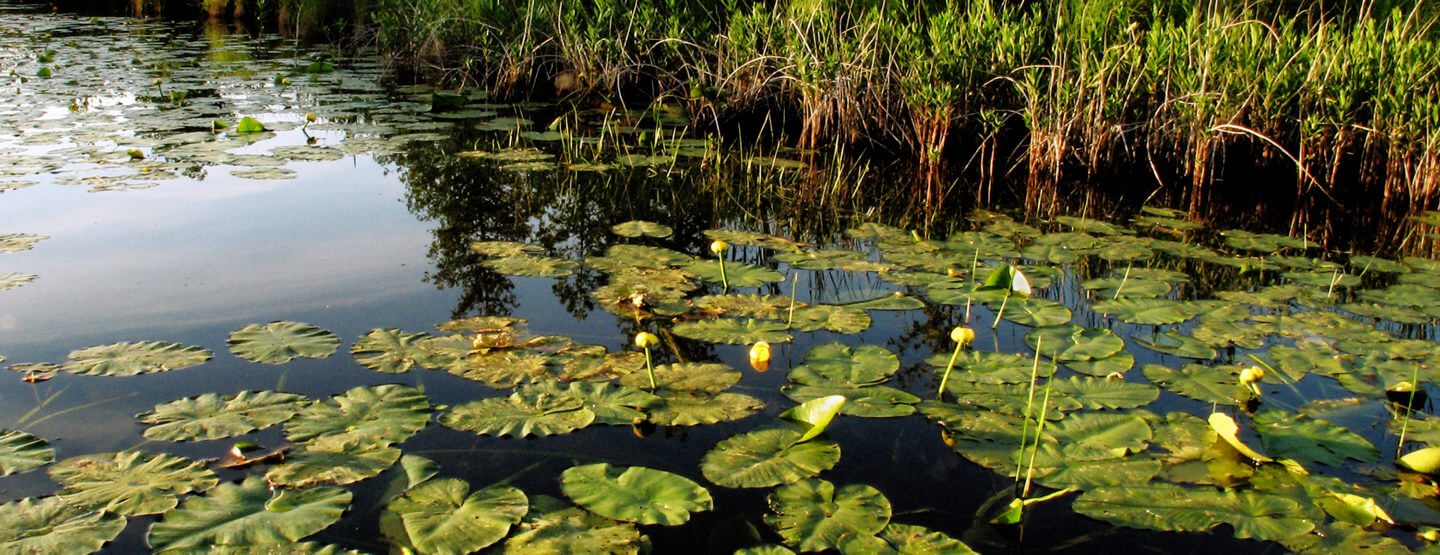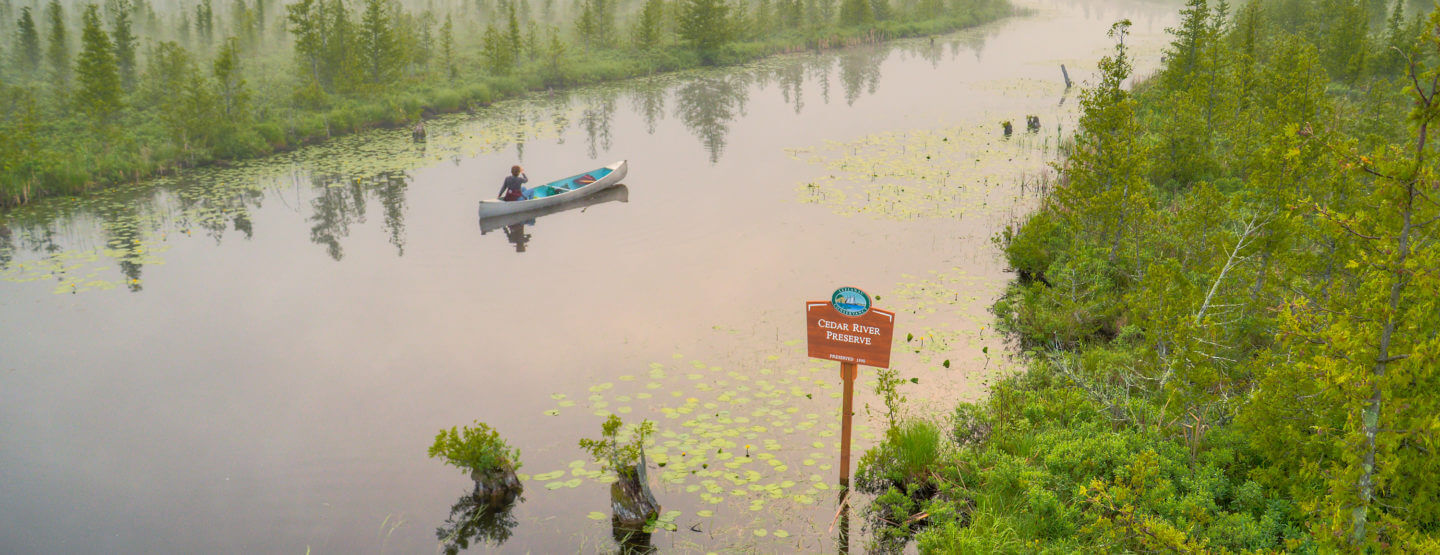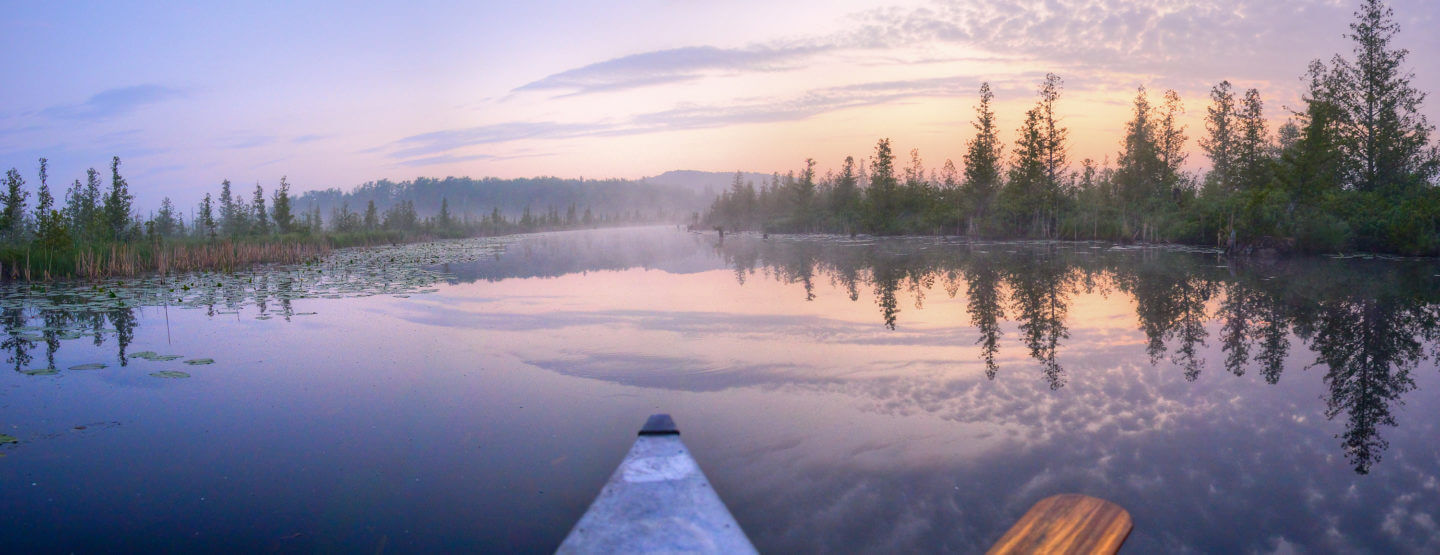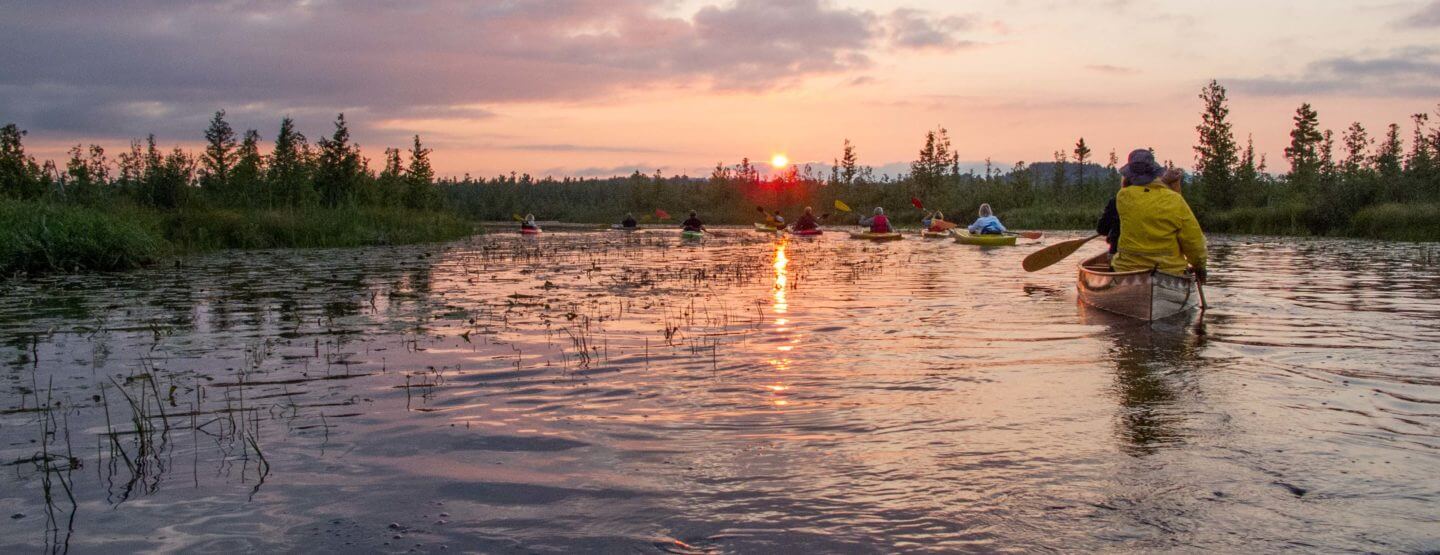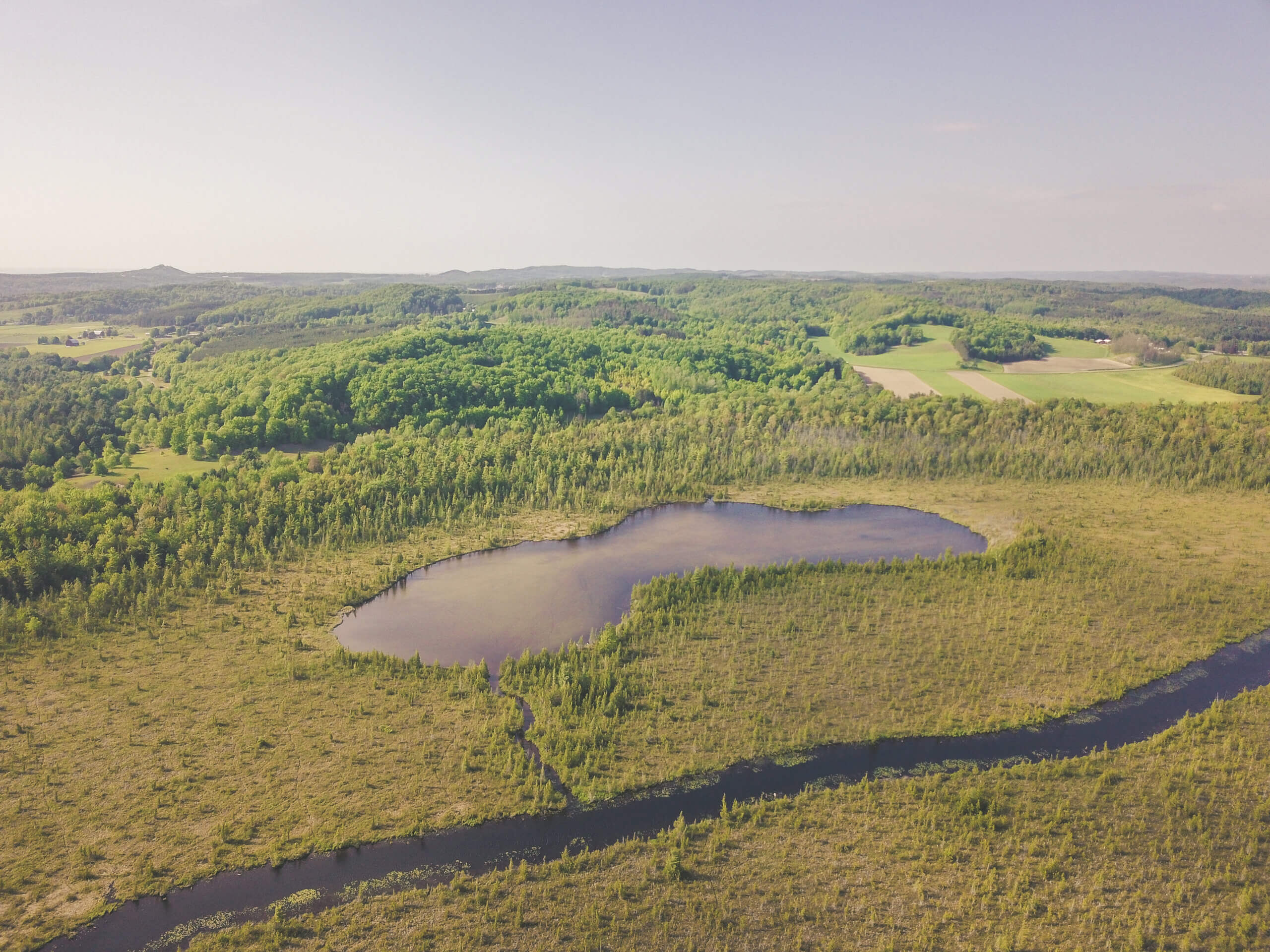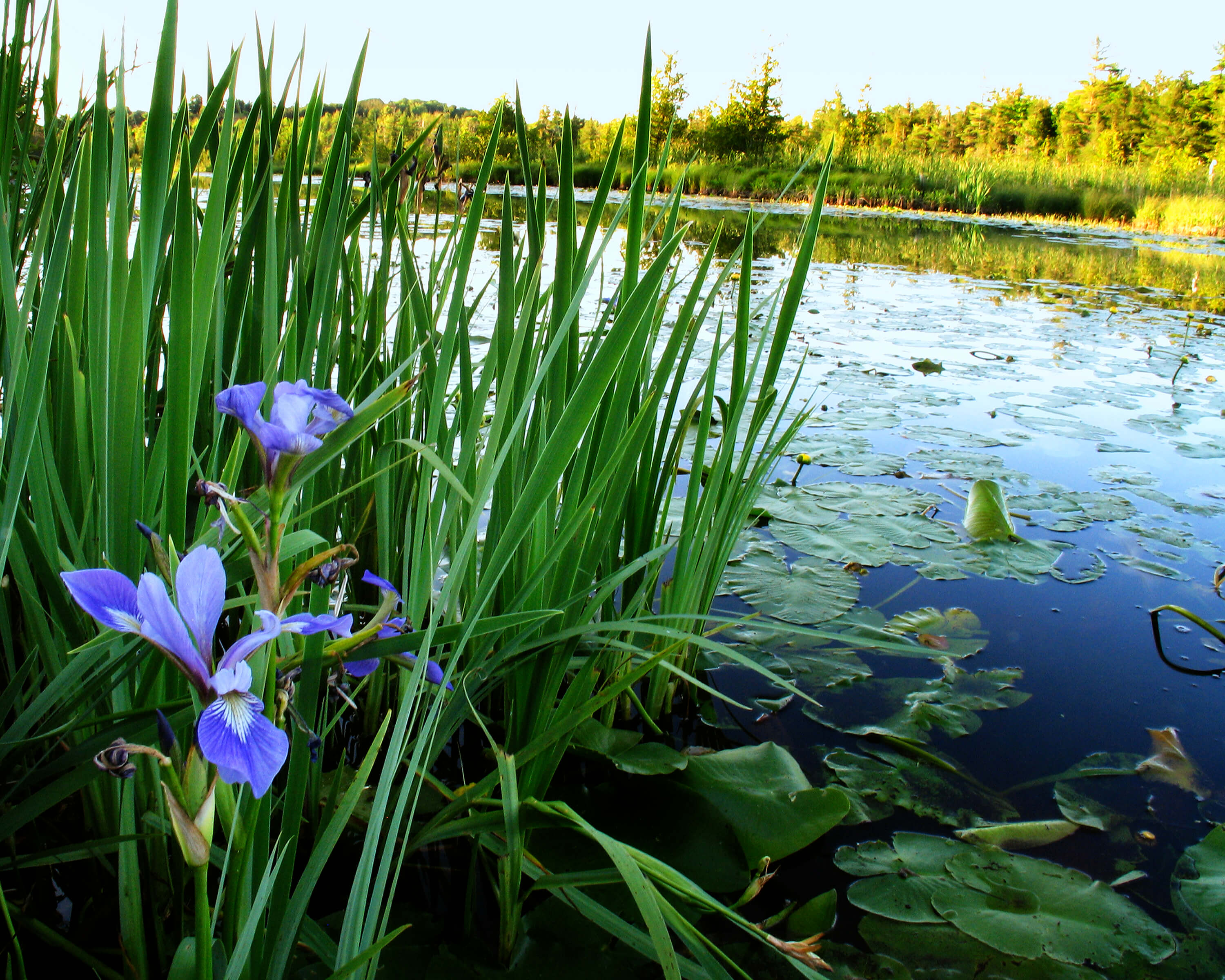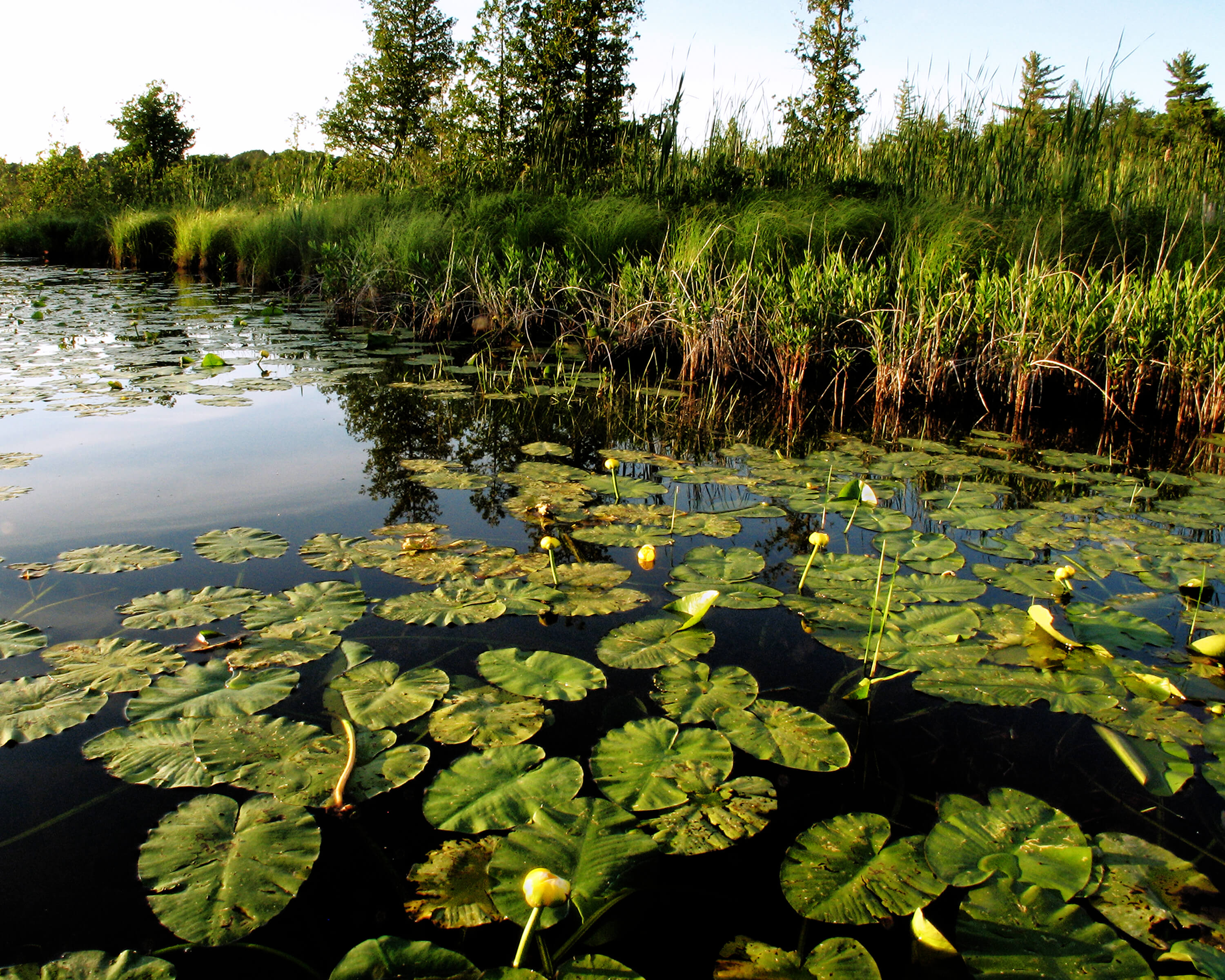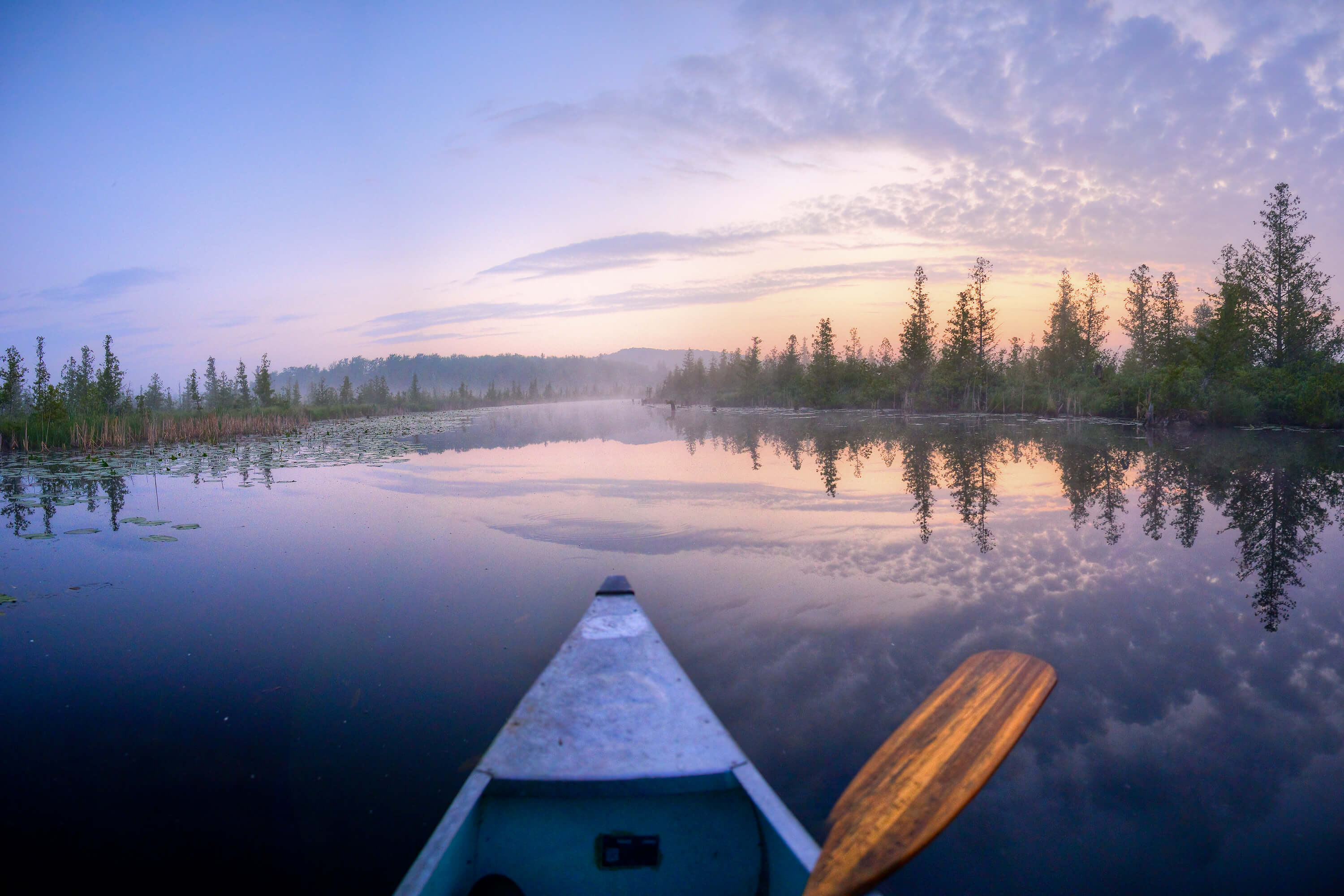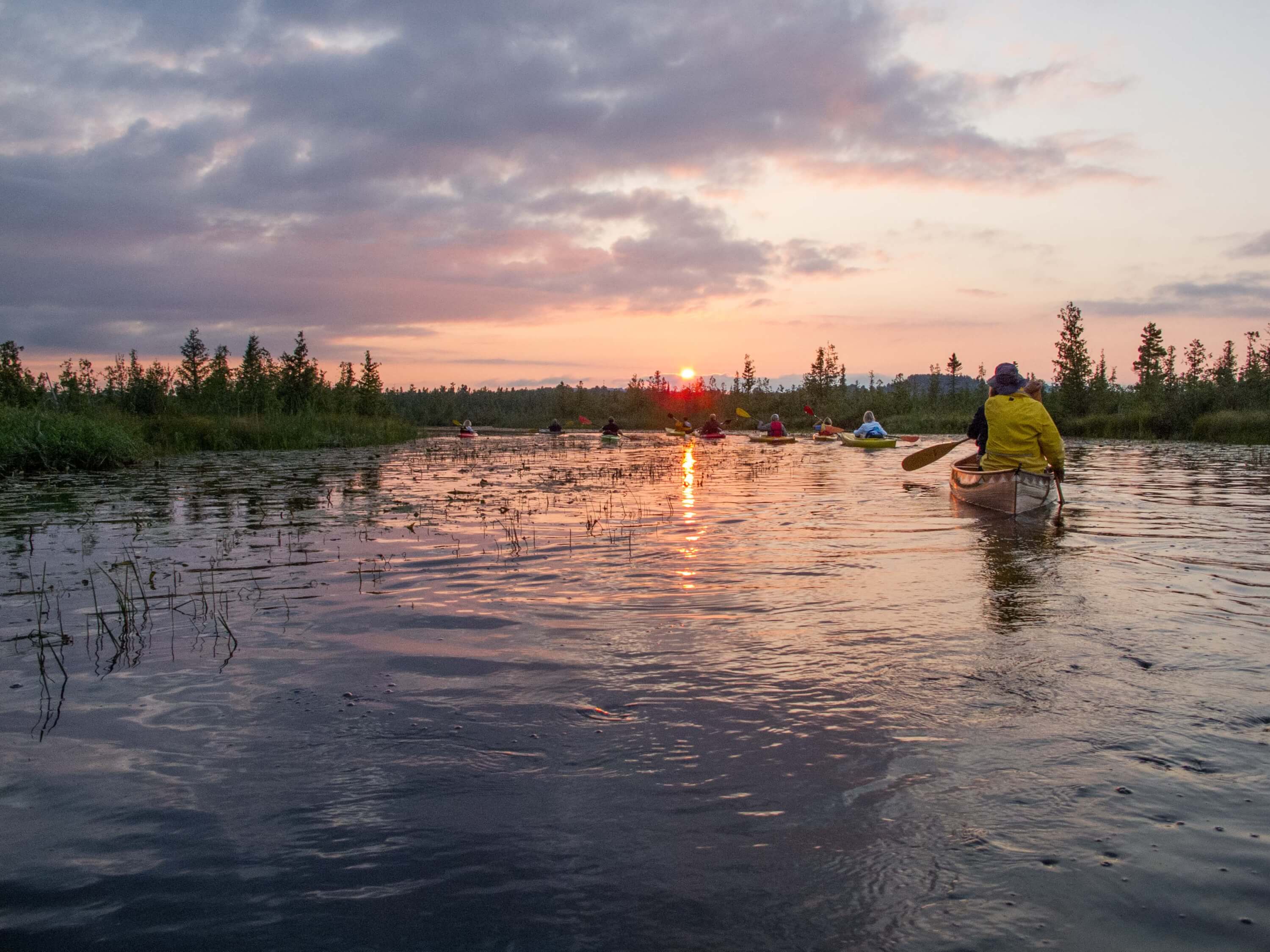The Everglades of Northern Michigan
This 548-acre undisturbed wetland complex in the Solon Swamp is an environmental superhero that protects the health of Lake Leelanau. A number of ecosystems and micro-habitats such as fen, shrub scrub, and aquatic systems provide a haven for wildlife such as sandhill cranes and rare wetland plants like the carnivorous yellow pitcher plant. An index based on Michigan Natural Features Inventory data ranks the conservation importance of a designated area. A FQI (floristic quality index) greater than 35 represents areas of conservation importance that are significant statewide. Areas with FQIs greater than 50 are extremely rare and indicate significant native biodiversity. So the fact that the native FQI for the Cedar River Preserve is 91.1 (262 native plant species) is extremely rare. This place is exceptional–a pristine ecological gem unique to Michigan.
The Bart and Gail Ingraham Preserve
The Bart and Gail Ingraham Preserve is a new 80-acre addition to the Cedar River Preserve. It provides the first dry land access to one of the wildest places left in Leelanau. In 2023, the 1.3-mile Ridgeline Trail opened, which offers a steady climb along a ridgeline that passes a vernal pool. At the top, you can see sweeping views of the Solon Swamp, the Cedar River, and South Lake Leelanau. Read more about the addition here and The Ingraham’s generous gift that made this possible here. The Cedar River Preserve is a beautiful, quiet place to hike, kayak, or canoe and to enjoy nature at its most diverse.
Water Trails
In addition to the new trail, you can access the preserve via boat from the launch in the village of Cedar or from Lake Leelanau. The river is very slow-flowing and easy to navigate downstream and upstream. There are a few spurs leading off of the river near its mouth, so be aware of your route if you plan to navigate the entire river, easy to accomplish in an afternoon.
Getting there: Start at the Cedar Village Park. You’ll reach the Conservancy property after about 4 miles (1.5 hours paddling). The entire waterway from the mouth of Lake Leelanau to the village of Cedar is protected (some is state land) and open to the public. A paddle through the Cedar River Preserve is the perfect place to view stunning yellow pond lilies, see a mink slip into the water or watch an osprey dive for its dinner.
History
The Cedar River Preserve is in Solon Swamp, near the southwest corner of South Lake Leelanau. The area has sustained no observable human impact, except for some cedars that were cut some 100 years ago. In 1990, the Conservancy fund-raised to buy the first 120 acres, which included 1,200 feet of Lake Leelanau shoreline. Since then a total of 420 acres has been protected–including a beautiful parcel overlooking South Lake Leelanau known as the Cedar River Preserve Addition (2019).
Features
Fortunately for kayakers and canoeists, the current on the Cedar is almost nil. Noticeable plants here are cattails, bog lady’s tresses, sundews, bladderworts, and the insect-eating pitcher plants. In more open water, fish, turtles, and whirligig beetles live among pond lilies and the burping echoes of green frogs. Note male frogs by their bright yellow throats. Whirligig beetles are the tiny manic insects carving loops in the river’s surface. They hunt for food with one set of eyes scanning above the water and one looking below.
Compelling Creatures
Few deer live along the river, because fen won’t support their weight. But mink and muskrats thrive here. Upright dead tree trunks make perfect perches for ospreys or kingfishers, and you can recognize the swamp sparrow’s calls by listening for the sound of an old fashioned sewing machine. Also on the wing are rare Saturniid moths, famous for their large wing spans (as much as five inches) and dramatic eye spots. They cannot survive under artificial night lighting, which disrupts their life cycles. They thrive in Solon Swamp, where only moonlight cuts the night blackness.
Cedar River Preserve Story Map
Click here to view a “story map” of how the Cedar River Preserve was created over time. See detailed maps of when the various parcels were protected along with beautiful photos and narration about what makes makes this place so unique and ecologically significant. Note: the story map was created in 2019 and does not include the 2020 addition to the preserve.
Plants
Dominant trees here are white cedar, yellow birch, balsam fir, black ash, and tamarack. However, most of the area is fen, a “quaking mat” of tight vegetation over open water. This is a wetland with alkaline soil fed primarily by groundwater, unlike bogs, which have acidic soil and are fed by rainwater.
The Cedar River FQA and Summary is available here. The FQA, or Floristic Quality Assessment, tells the story of the types and quality of flora at Cedar River Preserve.

